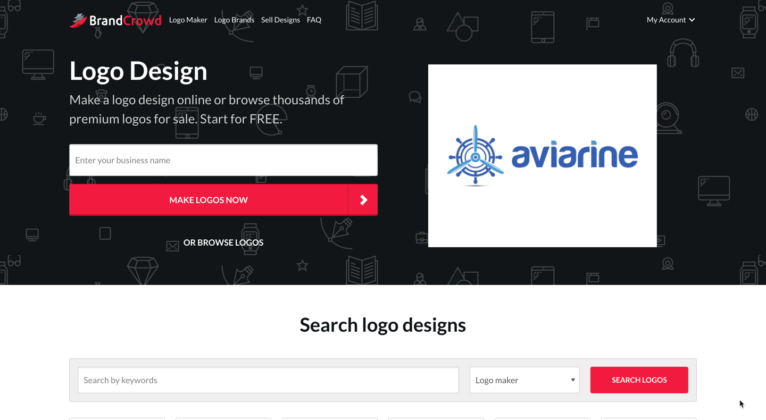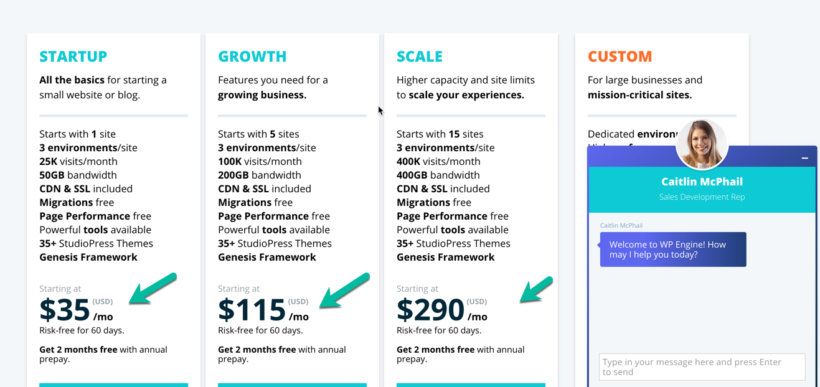

Digital Marketing Training
13 Steps To Building A Profitable High Traffic Technology Blog – Part Four – your logo
This is part four of my blueprint that will help you begin the process of building a high traffic profitable technology blog.
This is the fourth post in the series.
In part one, I talked about some of my experiences with some of the successful high traffic websites I actually built.
In part two, I shared a little about my belly of the whale strategy, a methodology I use to identify potential software niches to get into.
In part three, I talked about the importance of putting together a baby business plan.
This is part four of the blueprint that will help you begin the process of building a high traffic profitable technology blog.
Today I want to teach you how to get a logo for your business.
What is a logo?
Simply put, a logo is a symbol or other design adopted by an organization to identify its products, uniform, vehicles, etc. You are obviously familiar with some of the more famous ones.
The importance of a good logo
Logos are relatively important for an online business but their value is misunderstood by most online entrepreneurs. A lot of people starting out in this business obsess about the logo.
- What color should it be?
- What size?
- What tagline?
- What image?
- Vertical or horizontal?
I brought a friend along to help you.
As my friend the Rock just told you – NONE of this matters.
If that sounds like anathema to you I’m wagering that this is your first Rodeo and you still have time for all that quaint nonsense.
Let me be clear. At this stage in the game, your logo does not matter one bit.
What this does not mean
- Doesn’t mean you should have an ugly logo.
- Doesn’t mean you should pay ZERO attention to it.
- Doesn’t mean that you should not have one at all.
What this does mean
- Does mean that you should acknowledge this task is low priority.
- Does mean that you should spend no more than 2 days on this task.
- Does mean that after 2 days, your logo concept should be “good enough”
- Does mean that this is a task that you should come back to.
So this begs the question..
Should I buy a logo or design one myself?
Great question – easy answer.
If you have the skills, put one together in less than 48 hours. If not, buy one.
This begs the next question..
How much should I pay for a logo?
Great question – yet again another easy answer.
50 dollars.
No more than 50 bucks is what you should spend on a logo because quite frankly, anything more is a waste of money.
This begs yet again the next question..
Where should I get this new logo designed?
I would have given you a different answer a month ago but I found a really cool place where you can actually get your logo design for cheap.
It’s called BrandCrowd.
This is a really cool service where you can buy or alter really cool logos for reasonable prices.
While you can spend more than $1000 to buy a logo, that would be dumb. Pick something cool, modify it and keep it moving.
I did this in 3 hours for another site I’m building – https://www.laptopvideoreviews.com.
This took 3 hours and cost me $45. Logo done. I recommend BrandCrowd because it’s really easy to use and simple to get a good logo done.
Summary
When you start out in this business, a logo can drive you CRAZY and you can spend months trying to get the right colors and branding and sizes etc.
FOCUS ON YOUR BUSINESS!
Don’t get distracted because here’s the secret – you can always double back and get a better logo later. It’s better to have a viable business and a crappy logo than a beautiful logo and a failed business.
It’s simple.
In the next article, I’ll show you what WordPress Themes I recommend for you to get started quickly.
Enjoy!
Digital Marketing Training
13 Steps To Building A Profitable High Traffic Technology Blog – Part five – WordPress Hosting
This is part five of my blueprint that will help you begin the process of building a high traffic profitable technology blog.

This is the fifth post in the series.
In part one, I talked about some of my experiences with some of the successful high traffic websites I actually built.
In part two, I shared a little about my belly of the whale strategy, a methodology I use to identify potential software niches to get into.
In part three, I talked about the importance of putting together a baby business plan.
In part four, I described the importance of not wasting time on a logo.
This is part five of the blueprint that will help you begin the process of building a high traffic profitable technology blog.
Today I want to recommend WordPress Hosts to you.
What is a WordPress Host?
A WordPress Host or hosting company is simply the company that hosts your WordPress website files. There are a ton of companies out there that do web hosting but here is everything you need to know in a concise package.
To cut a long story short, there are 2 ways to deal with hosting for WordPress if you’re new to building a business.
- The dumb way – get regular hosting and figure out all the tweaking and maintenance.
- The easy and efficient way – with managed hosting.
What is WordPress Managed Hosting?
Managed hosting is exactly what it sounds like – hosting that is managed for you. God I wish I knew this when I started 15 years ago.
You see, a WordPress website has more parts that need maintenance than most people understand.
When you’re building an online business, you need to worry about the following:
- The WordPress installation
- WordPress version updates
- WordPress environments
- The database
- FTP/SFTP
- PHP
- The theme
- MySQL
- Plugins
- Performance
- The CDN (if you’re savvy enough to manually install one)
- Hacking and security
- Images
and more..
When I started out building websites, I had to learn how to manage all this stuff at once and ended up paying contractors to handle one thing here, then another thing there etc. etc.
It adds up and even worse…
It’s a massive distraction from your business!
Most people don’t want to know this stuff and more importantly, don’t need to know all this stuff.
That’s where a good WordPress Managed Host comes in.
The role of a good WordPress Managed Hosting company
It’s real simple, a good WordPress Managed Hosting company will have one goal and one goal alone – to keep you protected from all the bullshit you don’t have to worry about.
They help you with the install, troubleshooting becomes their problem 100%, they worry about performance, security is all their business, on and on it goes.
At the end of the day, they allow you to focus on your business.
While there are a few good hosting companies out there, I only have one recommendation.
WP Engine – Link here
I’ve been on their platform for years and can’t say without equivocation, I couldn’t stay in business without their company.
They are reasonably priced, they have 24/7 chat support, they have the most pleasant staff in the industry and they look after their customers. In addition, their control panel makes site management on the back end a breeze.
You can learn more here.
A managed WordPress company allows you to stay focused on your core business and that is invaluable.
It’s really that simple.
Head to their site and sign up for a reasonably priced hosting package and you’re in good shape.
In the next article, I’ll show you what WordPress Themes I recommend for you to get started quickly.
Enjoy!
Digital Marketing Training
13 Steps To Building A Profitable High Traffic Technology Blog – Part Three – the baby business plan
This is part three of my blueprint that will help you begin the process of building a high traffic profitable technology blog.

This is the third post in the series.
In part one, I talked about some of my experiences with some of the successful high traffic websites I actually built.
In part two, I shared a little about my belly of the whale strategy, a methodology I use to identify potential software niches to get into.
This is part three of my blueprint that will help you begin the process of building a high traffic profitable technology blog.
Today I want to share with you the importance of creating a business plan but not a regular business plan.
I call this…
The Baby Business Plan
Anyone who has written a business plan knows that to do it properly, it’s exhausting and requires a certain level of expertise and sophistication.
There are businesses and vendors who specialize in helping entrepreneurs write business plans. They are that complex.
Here’s the problem.
For most online entrepreneurs, at this stage in the process, that’s too much work. It just doesn’t make sense.
IMPORTANT – I’m not trying to say that entrepreneurs don’t need a plan, I’m saying at this stage, digital entrepreneurs don’t need the formal rigor of an exhaustive business plan.
You need a baby business plan.
What is a Baby Business Plan?
A baby business plan is a scaled down vision of your plans for your business. Simply put, you need to think about how this website or web based app will make money.
This is different from a real business plan because at this point you simply don’t need all that complexity.
So, let’s get to the meat and bones.
What are the elements of a Baby Business Plan?
A Baby Business Plan has 9 elements:
- Business name ( and URL)
- Business concept (Full description)
- Technology components (list and price)
- Labor costs to start
- Ongoing labor
- Marketing plan
- Marketing costs
- Monetization plan
- Maintenance costs
Like I said, this is a scaled down version that you can put together real quickly.
Let’s do a quick example. Let’s do a Baby Business Plan for a fake domain – http://myloveofstamps.com/.
So if I was the entrepreneur, I would create a plan that looked roughly like this.
- Business name: My Love Of Stamps (http://myloveofstamps.com/)
- Business concept (A website that will bring together fans and stamp collectors all around the world. We will have forums, lists and …..)
- Technology components:
- Hosting: WP Engine
- WordPress
- Thrive Themes
- etc. etc.
- Labor costs to start:
- 99 Designs web design – $899
- Web Development to build – $500
- Outsourced SEO – $200
- 100 articles writer: $1000
- etc. etc.
- Ongoing labor:
- Monthly writer – $400
- Monthly SEO – $50
- etc. etc.
- Marketing Plan:
- etc. etc.
- Marketing costs
- Facebook ads $50/month
- Twitter Promo: $20/month
- etc. etc.
- Monetization plan:
- Adsense on site
- Stamp ebook that we will develop
- Amazon ads
- Stamps.com affiliate
- etc. etc.
- Maintenance costs
- WP Engine $35/month
- Clicky Analytics $9/month
- etc. etc.
And so on and so forth…
Baby Business Plan – The format
Real simple. Word or Excel file. No presentation no graphics nothing too formal.
At this point you just want to have something that is a living document that you can continue to update as needed.
Why is this step critical?
Simple.
Because a lot of online tools are free or cheap and easy to use, it’s really easy to get started on an idea and build a proof of concept that can turn into a real site quickly.
This step helps you avoid two critical mistakes:
- Overspending on an idea that you have. Once you have all these costs listed you can start to plan and make sure you actually have the money to support this business.
- Validation – sometimes an idea sounds good in theory but when you actually write it out you start to see that it makes no business sense or requires too much money to be a viable business.
This step is a good step to keep you disciplined and focused. You need to write down you plan and start to internalize and share it with friends or people you respect so they can pick it apart and criticize it.
Better for an idea to die here than after you have spent lots of hours and lots of $$$ on it.
In the next installment in the series, I’ll show you how to quickly get a logo done.
Let me know if you think I missed anything here.
Digital Marketing Training
Digital Marketing Tip – 4 tips for finding and approaching a mentor
Unfortunately however, in my opinion, the topic of mentoring is grossly misunderstood.

No matter what business you’re in or how successful you are, you should have mentors and you should be actively mentoring people who are trying to learn from you.
I have been fortunate enough to have picked up both mentors and mentees over the years and it was an active process that has helped me immeasurably as a digital marketing professional over the years.
Unfortunately however, in my opinion, the topic of mentoring is misunderstood.
What is a mentor?
The dictionary defines a mentor as “an experienced and trusted adviser.” I believe that while that is technically accurate, it’s a minimalist definition of a very important word.
A lot of professionals have an older person who will meet with them for lunch or dinner once in a while, give them some tips and shoot the sh$t for a little bit. That in my opinion is not a mentor. That’s an older professional who will meet with you once in a while.
The analogy is somewhat like meeting a member of the opposite sex for lunch or dinner once in a while and saying that’s a boyfriend/girlfriend. That’s not how it works.
My definition of a mentor
My definition of a mentor is I believe a little more accurate for what most of us need. A mentor is “an experienced and trusted adviser who is INVESTED in your success.” the operative word here is INVESTED.
A real mentor is someone who has bought into your goals and dreams on your behalf, is an advocate and would be PERSONALLY invested in the outcome of your journey, one way or another. Basically, a mentor is a personal connection to your goals.
Real mentors are hard to find because it requires WORK on their end and the truth is, most people are busy, they usually only have time for things that are really important.
So, here are four tips to help you find and approach a mentor.
Understand your strengths and weaknesses
You need to be really honest with yourself and understand what you’re good at and where you need improvement. If you’re great at marketing but suck at sales, you should be spending time trying to find seasoned sales professionals to learn from.
While it’s awesome to network and meet as many professionals as you can (“you never know”), since time is limited, you need to be efficient with your outreach.
Understand your goals
Where do you want to be long term? Where are you in your journey and what questions do you have about getting to the end zone? If you don’t know or haven’t given this serious thought, how the heck can anyone help you?
Without a clear sense of direction, you will keep meeting well meaning and sincere people who will give you advice that will swing you back and forth and leave you no better off than when you started. Not their fault, it’s yours for not having a goal.
Communicate clearly
Share the points above with someone you want to mentor you so that it’s clear how they can add value. This has a bunch of benefits.
First, it shows them that you are a serious professional who thinks things through. Second, it gives them a clear picture of who you are and what you are looking for so they can start thinking of a roadmap they can share with you early.
Third, it gives them the opportunity to sincerely say no if they’re not a good fit. Maybe they can refer you to someone who can be a better guide for you.
Be respectful
If that person agrees to meet with you, they are doing YOU the favor. Be grateful. Send emails thanking them. Pay attention to what they say whether or not you agree.
Don’t argue with that person but try and raise your points or objections respectfully. Once again YOU need them, not the other way around.
That doesn’t mean you have to do what they say, after all you are ultimately going to do whatever YOU decide. It does mean that you should make sure they feel like they were heard and their input was valuable.
Make it easy
In marketing, one of the ways to get someone to review your products (and hopefully endorse them) is to make it easy. Provide a writeup of the product, images and everything they need to share it. This is a more effective way of getting your product or service reviewed.
Likewise, for a mentor, do your homework and make things easy. Offer to drive out to meet near where they are. Offer to buy lunches or dinners. Provide a clear synopsis of what you want to discuss.
Give them credit whenever you can. Show that you are someone worth endorsing and mentoring and try and make it a no-brainer for them to want to partner with you for your success.
The bottom line
Finding a mentor is actually like finding a job. You have to do the research and be focused to find and keep that person’s attention. If you treat the process as seriously as it deserves to be treated, you will see results.
Let me know what your experience has been with this in the comments below.
-

 Website Performance6 years ago
Website Performance6 years agoWebsite Optimization Tips – Optimizing the Order of Styles and Scripts
-

 Web Content7 years ago
Web Content7 years agoHow to test a copywriter
-

 Website Performance6 years ago
Website Performance6 years agoWordPress Performance Tips – Enable Keep Alive
-

 Web Content10 years ago
Web Content10 years ago7 Basic Principles Of Good Writing
-

 URL Redirects6 years ago
URL Redirects6 years agoSpeeding Up WordPress – Avoid Landing Page Redirects
-

 Digital Marketing Training5 years ago
Digital Marketing Training5 years ago13 Steps To Building A Profitable High Traffic Technology Blog – Part five – WordPress Hosting
-

 Evaluation9 years ago
Evaluation9 years agoFind The Traffic Of Any Website With SimilarWeb
-

 Digital Marketing Training6 years ago
Digital Marketing Training6 years ago13 Steps To Building A Profitable High Traffic Technology Blog – Part Three – the baby business plan








